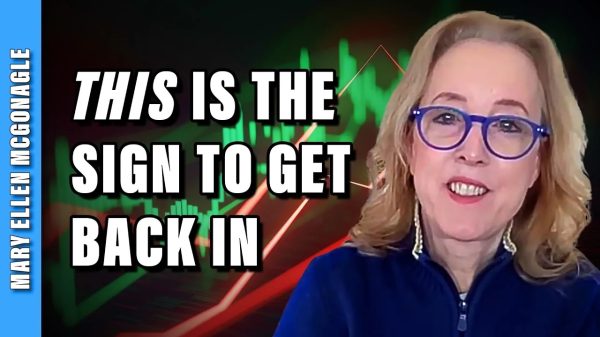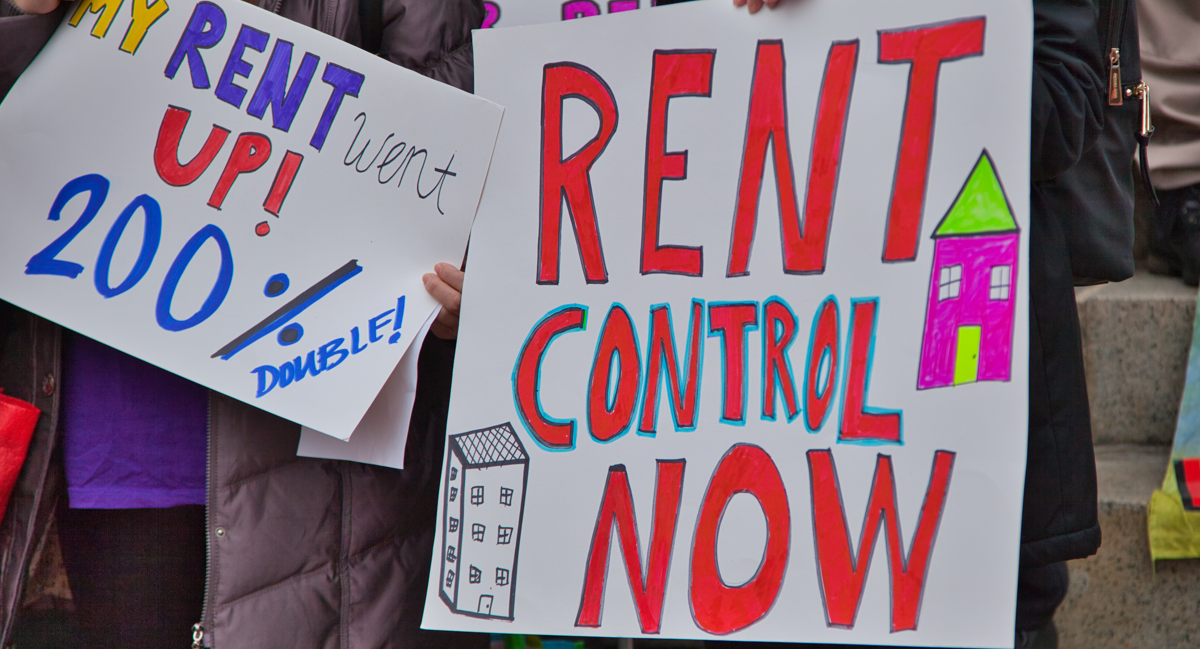It certainly isn’t common to find much agreement between the various authors here at the Mises Institute and our favorite metaphorical punching bag: Paul Krugman. But when it comes to the recently resurrected policy corpse of rent control, we have found a common cause.
As Krugman noted back in 2000,
The analysis of rent control is among the best-understood issues in all of economics, and—among economists, anyway—one of the least controversial. In 1992 a poll of the American Economic Association found 93 percent of its members agreeing that “a ceiling on rents reduces the quality and quantity of housing.” Almost every freshman-level textbook contains a case study on rent control, using its known adverse side effects to illustrate the principles of supply and demand. Sky-high rents on uncontrolled apartments, because desperate renters have nowhere to go—and the absence of new apartment construction, despite those high rents, because landlords fear that controls will be extended? Predictable.
Bitter relations between tenants and landlords, with an arms race between ever-more ingenious strategies to force tenants out . . . and constantly proliferating regulations designed to block those strategies? Predictable.
Paul Krugman has been wrong about plenty, but you’ve got to give him this one. Not that that is saying much, of course. The survey Krugman referenced above contained forty questions and was sent to 1,350 economists. The question regarding rent control had a more lopsided response of all forty.
93 percent said yes (76.3 percent agree and 16.6 percent agreed with provisions) while only 6.5 percent disagreed. Which means Krugman can’t be worse than the ninety-third percentile of economists out there!
The Return of Rent Control
Rent control originally became popular during the early 1900s, predominantly in New York. This was when the first major wave of immigration was near its height and low-quality tenement housing was being thrown up left and right to house them. The dwellings were cramped and crowded and spurred (misguided) antilandlord animus as well as (misguided) calls for reform.
Rent control spread throughout the United States until the 1950s when a postwar housing construction boom alleviated supply issues and the failure of rent control became more obvious. In the 1970s, a new generation of slightly more moderate rent control measures (now called “rent stabilization”) were introduced in predominantly liberal coastal cities. But that was about it. As the Urban Institute noted in 2019, “today only four states (New York, New Jersey, California, and Maryland) and Washington, DC, have local governments with active rent-control laws.”
Yet despite the near unanimity amongst economists that rent control is detrimental a multitude of activist groups and politicians are pushing to reanimate this zombie policy because, surely it just wasn’t tried hard enough the first time around.
The most radical proposals are effectively communist. A group named People’s Action proposed a “National Homes Guarantee” which “takes housing off the market and decommodifies it.” One would hope the catastrophic results of the twentieth century’s communist “experiments” and the dreary and lifeless bloc apartments they created or the American disasters with public housing such as Cabrini-Green would give such proponents pause.
Regarding more moderate proposals, two Los Angeles counties voted to approve a rent control measure in 2022 that caps rent increases at 4 percent per year. Oregon passed a statewide cap of 10 percent. And several coastal, liberal strongholds like San Francisco and New York have had rent control for a long time now. Indeed, even voters in Florida approved a ballot measure for rent control before a judge ruled it unconstitutional.
Now the Biden administration has proposed a Blueprint for a Renters Bill or Rights with a particularly notable provision that requires the Federal Housing Finance Agency (FHFA) to put a cap on “egregious rent increases.” A letter from seventeen Democratic senators asked the FHFA to limit any rent increases on all properties with a Fannie Mae or Freddie Mac loan on them, which would effectively discriminate against property owners based on the type of financing they’ve obtained.
Needless to say, rent control is back on the table.
Why Rent Control Does Not Work
Perhaps it shouldn’t be surprising that rent control is actively being discussed again. Both rents and home prices have increased dramatically in the United States over the past few years. And home prices have actually continued to increase despite interest rates more than doubling since mid-2021.
Unfortunately, instead of blaming the unaffordability of housing on the massive increase in the monetary supply during covid which creates inflation throughout the economy, including housing, as well as restrictions on housing that crimp supply and a government-subsidized policy of large-scale immigration that increases demand; rent control has been the go-to solution for those on the left.
As with any price control, when a cap is placed on prices below the market rate, supply will be reduced. Graphically, it looks like this:
Source: Murray N. Rothbard, Man, Economy, and State with Power and Market, 2 scholar’s ed. (Auburn, AL: Mises Institute, 2009), fig. 83.
Point P represents the amount of supply (in this case, housing being provided) under normal market conditions. When a price control is introduced—in this case C—then the supply is reduced from point P to point A. The more restrictive the price control, the more supply will be reduced.
One might think this wouldn’t apply to housing since housing suppliers can’t simply choose how many total houses are in the market each year. The buildings already exist. While this is true, owners of single-family houses can choose to sell to a homeowner instead of rent. In low-end areas, property owners may just let a property fall into disrepair and become unlivable if it cannot produce positive cash flow. Most commonly though, the result of a price control in housing is a reduction in new construction, which ironically, would increase supply and make housing more affordable.
Thus, for example, we see a study from the National Association of Builders shows that when rent controls are removed, there is a “faster supply growth in the ensuing years for rent-controlled communities.”
Indeed, the literature on rent control is extremely one-sided. A 2019 Stanford study found that “rent control limits renters’ mobility by 20%” and “‘landlords treated by rent control reduce rental housing supplies by 15%” and overall rent control “likely drove up market rents in the long run.”
Another study by the left-leaning Brookings Institution on rent control in Cambridge, MA found that, “the policy imposed $2 billion in costs to local property owners, but only $300 million of that cost was transferred to renters in rent-controlled apartments.”
The libertarian Fraser Institute’s report on rent control points out that,
Economists who have researched its effects are virtually unanimous in their assessment. The extent of their agreement is indicated by the remarks of the 1974 Nobel Prize winners in economics, Gunnar Myrdal and Friedrich Hayek, whose ideological views on matters other than rent control are, to say the least, quite different.
Gunnar Myrdal, whom Samuelson described as an important architect of the Swedish Labor Party’s Welfare State, had the following low opinion of rent control and those who implement it: “Rent control has in certain western countries constituted, maybe, the worst example of poor planning by governments lacking courage and vision.”
Throughout the report are pictures of ruined buildings and city blocks with the question “bomb damage or rent control?” It is honestly quite difficult to guess which is which.
It’s also important to note that rent control doesn’t just cause a reduction in supply. As Krugman noted in his piece referenced at the beginning, he found an article in the New York Times complaining about how “In San Francisco, Renters Are Supplicants.’’
It was an interesting piece, with its tales of would-be renters spending months pounding the pavements, of dozens of desperate applicants arriving at a newly offered apartment, trying to impress the landlord with their credentials. And yet there was something crucial missing—specifically, two words I knew had to be part of the story . . . which are, of course, “rent control.”
After all, the sort of landlord behavior described in the article—demanding that prospective tenants supply resumes and credit reports, that they dress nicely and act enthusiastic—doesn’t happen in uncontrolled housing markets. Landlords don’t want groveling—they would rather have money.
Indeed, it’s not hard to find cases where landlords stop doing routine maintenance on rent controlled properties because the rent won’t cover their expenses. More commonly, they’ll simply stop updating them and prime real estate will be outfitted with fixtures from several decades ago. In a few cases, unscrupulous landlords will demand sexual favors or other bribes for what are by government policy, undermarket rent properties with far more demand than there is supply.
The Free Market Solution
It is, of course, impossible to satisfy every human desire since what humans want is effectively infinite while what is quite certainly finite.
But when it comes to housing, the solution to making housing more affordable is rather straightforward: build more.
Of course, the Federal Reserve’s reckless monetary policy and wild swings in policy need to be addressed (preferably with the institution’s abolition) and government’s subsidies to mass migration should be ended. But in the short term, when there is a market dislocation between supply and demand, the way to alleviate it is with additional supply.
Yet wherever we turn, the government is getting in the way with arduous building codes. San Francisco—one of the cities with rent control now—is almost comical in this regard. The average time from a submission to permit on a new construction project is just shy of three years while the costs to build runs to $440/square foot; the highest in the world with much of that cost being due to the length of development and city fees.
Is it any surprise people are leaving San Francisco in droves? Thus, the solution is to basically take what San Francisco is doing and do the opposite.
Building more is the only way out of America’s housing crisis. Rent control and other government restrictions are just going to make the affordability problems in the United States all the worse.






















